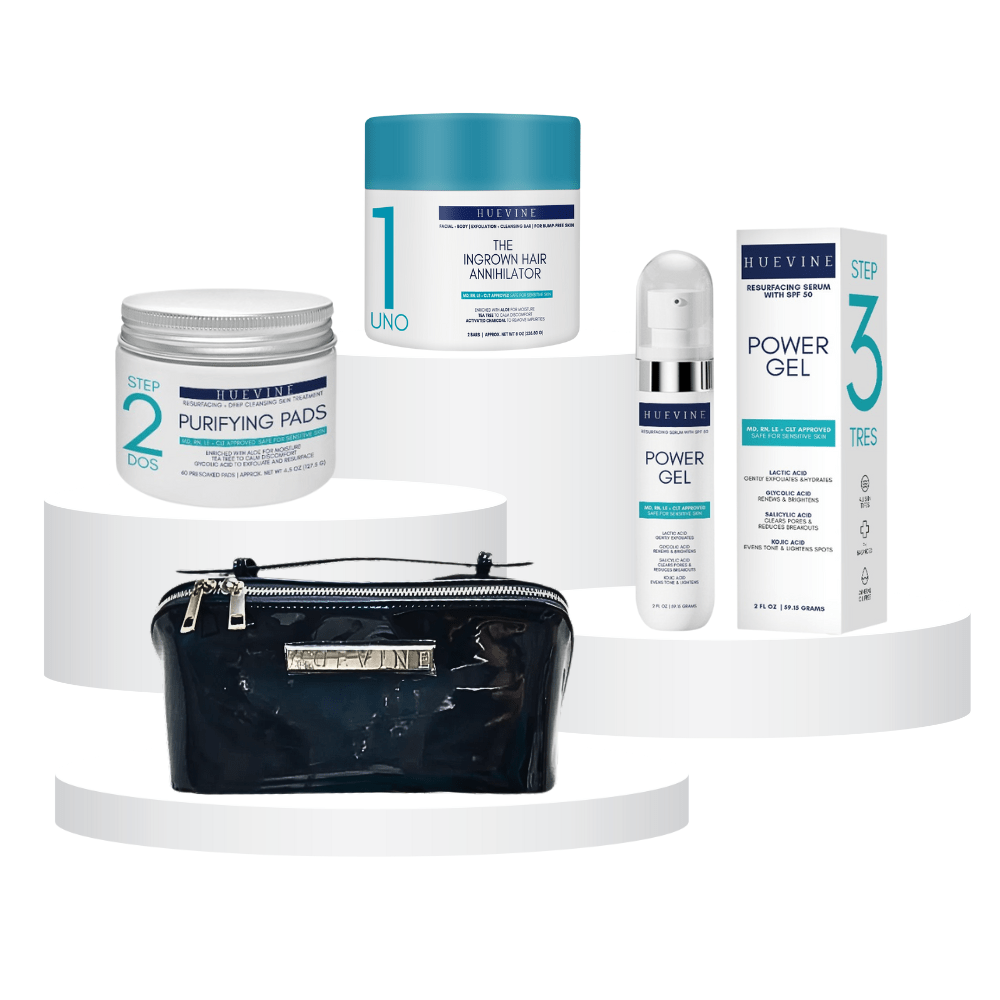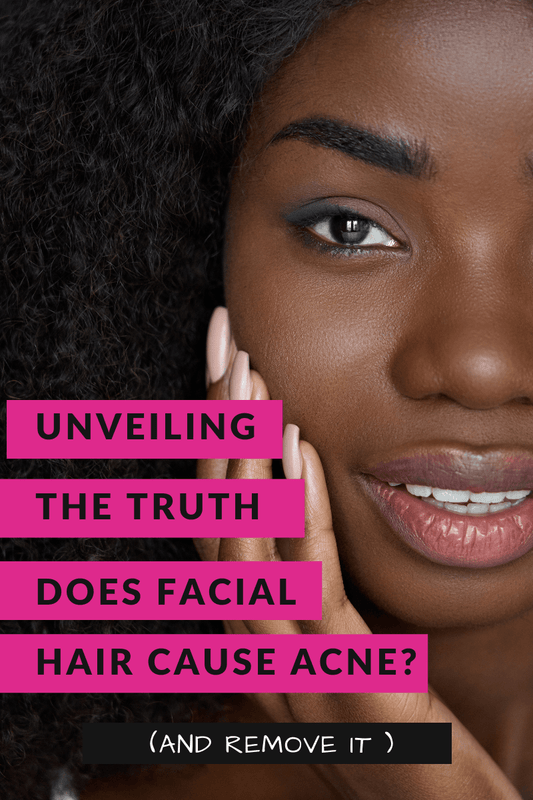Facial hair seems to be all the rage these days. From well-groomed beards to a sexy mustache, facial hair can make a man look masculine and attractive. But what if you start to experience acne breakouts on your face? Could your facial hair be causing your acne? Facial hair seems to be all the rage these days. Read on to know more.
Let’s Discuss Beard Acne First
Acne is a very common skin condition, especially in teenagers. However, acne can occur at any age. Beard acne happens when blemishes grow in the facial hair follicles.
Reason for Beard Acne
The cause of beard acne may not be as obvious as hormonal changes during puberty, but it can still plague the hair follicles and leave you with irritation and inflammation. It all starts with bacteria getting trapped in clogged pores, mixed with sebum oil and dead skin cells. The buildup of oil, dead skin cells, and product residue in your beard can lead to pesky acne. However,
Common Ways to Avoid Beard Acne
According to dermatologists, the key to preventing beard acne is care and proper skin. This means cleansing the skin twice daily with a gentle cleanser, using an exfoliating scrub once or twice a week, and applying a light moisturizer every day. In addition, it's important to avoid touching or picking at the skin, as this can lead to irritation and inflammation.
Following these simple tips can help reduce the risk of beard acne breakouts and keep your skin looking healthy and clear.
Washing the Beard
One of the most common places for them to break out is on their face...or, more specifically, their beard. That's right, and if you don't wash your beard regularly, you could end up with a face full of pimples. Gross, right? But it's true. If you do not wash it regularly, the beard hair will get oily. As a result, emerging hair or dead skin cells will get trapped, leading to acne breakouts. So what should you do? Firstly, properly rinse your beard after cleaning since dirt can irritate the skin and hair follicles and clog pores.
Exfoliation
As anyone who has ever dealt with acne knows, clogged pores are a big problem. Not only do they make your skin look dull and lifeless, but they can also trap hair within the follicles, leading to Ingrown hairs. One way to prevent clogged pores is to exfoliate on a regular basis. Exfoliation removes your dead skin cells to improve cell turnover, which stops the pores from getting clogged in the first place. There is no need to exfoliate daily, but you can do it 2 -3 times a week or whenever you are trimming or shaving the beard.
Many dermatologists suggest applying a chemical exfoliant (glycolic acid, lactic acid) over extreme physical scrubs. Chemical exfoliants are gentle yet effective and can help keep your pores clear and your skin looking its best.
Improving Shaving Routine
Every man knows that a fresh shave is essential for looking sharp. But many men don't realize that their beard care routine could be the source of irritation and ingrown hairs. Exfoliating before shaving can help to remove dead skin cells and reduce the chance of clogged pores. It can be beneficial if you shave after showering. It is because the steam and the warm water help to open the pores and soften hair.
In addition, it's important to change razor blades on time, as dull blades can cause snagging and irritation. Always go according to your hair direction rather than against the grain when shaving. And finally, electric razors are often less likely to cause pseudofolliculitis than traditional razors. Following these tips can avoid common shaving pitfalls and achieve a smooth, nick-free shave.
Brushing Is Mandatory
Any man with a beard knows that grooming is essential to keeping your facial hair looking its best. A good brush is one of the most important tools in your arsenal. Brushing helps apply the products to your hair evenly, and it also helps to keep the hair detangled. That is important to minimize the chance of ingrown hairs.
In addition, brushing stimulates blood flow to the follicles, which can help to promote healthy growth. So if you're looking to take your beard game to the next level, be sure to invest in a good brush and give your facial hair the attention it deserves.
Moisturize
Moisturizing is an important step in any skincare routine, yet many people still skip it, thinking it will only lead to oiliness and clogged pores. But this couldn't be further from the truth! In fact, not moisturizing can actually cause your skin to develop more sebum oil, leading to extra oiliness. The best way to avoid this is to select a light moisturizer, like a gel moisturizer or a beard oil which is easier to apply evenly throughout the beard.
These oils and moisturizers will help you to avoid scratching the skin beneath the beard. If you also experience dryness, itching, or razor bumps, it is best to use a moisturizer. So don't skip out on this crucial step - your skin will thank you for it!
Avoid Touching Your Face
We all know that we shouldn't touch our faces, but sometimes it's hard to resist. After all, our faces are right there in front of us, and they can feel itchier than ever when we're stressed out or tired. However, it's important to remember that the hands are one of the dirtiest parts of the body, and frequently touching the face can cause clogged pores and breakouts. So the next time you feel the urge to reach up and scratch your nose or rub your eyes, resist the temptation! Your skin will thank you in the long run.
Better to Use Clean Linens
Anyone who's ever had a beard knows they require special care and attention. You need to use the right products to keep your facial hair clean and soft, and you also need to be vigilant about hygiene. That's why it's essential always to use clean linens when cleaning your beard.
Clean towels and washcloths will help to remove any dirt and oil buildup and ensure that you're not transferring any bacteria onto the skin. It's also important to regularly clean your pillowcases and sheets. This will help prevent the transfer of oil and dirt from your face onto the fabric, which can cause breakouts or irritation. By taking these simple steps, you can keep your beard healthy and looking its best.
Ways to Get Rid of Beard Acne

To get rid of acne, take some useful steps, such as topical treatments or prescribed shampoo. According to expert Dermatologists,
"In many cases, we'll start by suggesting patients incorporate some over-the-counter (OTC) items into their everyday routine. If the breakout is severe enough, then I can also suggest in-office treatments."
Dermatologic Treatments to Treat Beard Acne
Medicated Face Wash
Acne breakouts can be frustrating, especially when you feel like you've tried every face wash on the market. But don't despair – there are medicated face washes that can help. Look for a face wash with anti-inflammatory and antibacterial ingredients like salicylic acid and benzoyl peroxide. It will help to clear the current breakout and control future breakouts.
For your face, a softer strength (about 4%) benzoyl peroxide wash is acceptable. And don't forget to moisturize afterward! A medicated face wash can help you get your acne under control – and help you feel more confident about your skin.
Topical Treatments
Though often associated with puberty, acne can occur at any time. Despite its prevalence, acne-prone skin can be challenging to treat. While many different treatments are available, topical treatments are often the first line of defense. You can apply these treatments directly to your blemishes and help to clear even the most stubborn scars.
Various topical treatments are available, but general gels based on spot-treating technology can be the most effective. These gels penetrate the skin and target the bacteria that cause acne. While they are typically very effective, they can take a bit longer to work than other products.
This is because they need to be applied directly to each blemish, which can be time-consuming if your face is covered in acne. However, if you are patient and use them as directed, you will see a noticeable improvement in your skin within a few weeks.
Medicated Shampoos
If you're struggling with beard acne or clogged pores, you may want to consider using a medicated shampoo. Such shampoos contain salicylic acid, which helps clean the acne and reduce inflammation. Medicated shampoos can also be used on the head if you face dandruff or other scalp concerns. Using a medicated shampoo can be a great way to improve the health of your skin and hair.
Oral Medications
Oral medications are a great way to reduce the number and severity of beard acne breakouts. Antibiotics help to kill the bacteria that cause acne, while isotretinoin helps to reduce the oil production that can lead to breakouts. Hormonal therapy pills can also help regulate the hormones that trigger acne flare-ups.
All these medications can be taken orally, making them convenient and easy to use. Best of all, they effectively reduce breakouts and prevent future flare-ups. So if you're looking for a way to get your acne under control, oral medications may be the answer.
Dermatologic Treatments
Some dermatologic treatments like chemical peels or laser therapy can also help you get rid of it. These treatments stimulate healthy skin cell turnover, clear your blemishes, and stop future breakouts. If pseudofolliculitis occurs around the edge of the beard, laser hair removal will give you the best results.
Chemical peels can also help to improve the appearance of scars and uneven skin tone. If you're interested in exploring these options, be sure to discuss them with your dermatologist.
Extraction of Pimple
If you've ever had a deep or large pimple, you know how painful and frustrating it can be. Even if you resist the urge to pop them at home, they often take forever to heal and can leave behind nasty scars. That's where pimple extractions come in. Dermatologists have the experience and tools to clear your pimples safely and quickly without risking infection or further irritation. The whole process is pretty straightforward:
- The dermatologist will cleanse your skin to prepare for extraction.
- They'll use a small tool to gently loosen the blemish from your skin.
- They'll extract the pimple with a bit of suction.
The whole thing usually takes just a few minutes, and you'll be on your way to clearer skin in no time!
Conclusion
We’ve covered a lot of ground in this post about beard acne. Now that you know more about what it is, the causes, and how to prevent and treat it, we hope you feel better equipped to manage your facial hair and keep your skin looking clear and healthy. Stay tuned for more updates from us on all things grooming-related – including information on how to make sure your beard looks its best!



